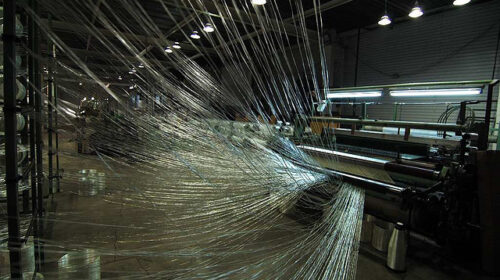E-glass fibre market to Surge at 7.21% CAGR, which is anticipated to reach USD 17.25 billion by 2030.
CRI Report has released a report titled “E-glass fiber market – Analysis of Market Size, Share & Trends for 2020 – 2030 and Forecasts to 2030” which is anticipated to reach USD 17.25 billion by 2030. According to a study by CRI Report, the market is anticipated to portray a CAGR of 7.21% between 2020 and 2030. E-glass fiber yarn & roving market size is expected to grow due to rising demand for glass fibers from the automotive & transportation, construction, wind energy, pipes & tanks, and aerospace industries. These lightweight materials provide excellent tensile strength, flexibility, thermal and electrical resistance at a low cost. As the construction industry places a greater emphasis on energy saving, the market for E-glass fiber yarn and roving for use as insulating materials is projected to expand.
The market report on the E-glass fiber market includes in-depth insights as:
- The estimated value of the market was USD 8.6 billion in the year 2020.
- Region-wise, the market in Asia-Pacific which held the largest market share in the year 2020, emerged as a key market for E-glass fiber market.
- Based on Fiber, E/ECR-Glass Fiber emerged as a key segment in the E-glass fiber market.
- Based on Application, the transportation segment emerged as a key segment in the E-glass fiber market.
- Key players are likely to focus on product innovations and expansion through mergers to retain their positions in developed markets.
“The need for glass fibers is projected to rise as the global construction industry grows. The market for glass fibers is being boosted by new residential development in developed countries such as the United States. Developing economies, such as China and India, are experiencing a rapid economic expansion, which is leading in robust infrastructure construction. Construction of new buildings, maintenance and repairs, remodeling, or upgrading existing structures, on-site assembly of precut; construction of temporary buildings; and installation of specialist building utilities such as elevators and escalators are all increasing in these nations. Glass fiber consumption in construction industries is expected to rise as a result of all of these causes.”, according to this report
E-glass fiber has been used as a high-temperature insulator for electrical conductors in large-scale industrial applications since 1930. E-glass fibers are the most widely used in the textile sector and in composite materials, accounting for 90% of all reinforcements. The resilience to high temperatures and outstanding electrical insulating characteristics of this high-quality fiber set it apart. This fiber is rot-proof, chemically resistant, and dimensionally stable, even when subjected to significant changes in humidity and temperature. E-glass fiber materials are particularly abrasion and vibration resistant, as well as extremely flexible. The specific resistance of glass threads is greater than that of steel threads (tensile strength/volumetric mass). This property allows glass threads to be developed to strengthen high-performance composites.
E-glass fiber market is segmented by Fiber type into E/ECR-Glass Fiber, S-Glass Fiber, C-Glass Fiber, and Others. Among these the E/ECR-Glass category dominated the market in 2019, accounting for the bulk of global shares. In comparison to E-glass fiber, ECR-glass fibre, also known as electronic glass fibre, has higher mechanical strength, a better waterproofing ratio, and electrical acidic and alkali corrosion resistance. It is utilized in the production of transparent GRP panels. During the projected period, this sector will grow due to increased demand from different end-use industries.
Key Players in the Market
- Some of the key players operating in the E-glass fiber market are Changzhou Tianma Group, Vetrotex (Saint-Gobain), Nippon Electric Glass, Lanxess, Jiangsu Jiuding New Material, CPIC, Ahlstrom, Taishan Fiberglass (Sinoma), Johns Manville, Owens Corning Corporation, Jushi Group, PPG Industries.
Get Valuable Insights into the E-glass fiber market
In the new report, CRI Report thrives to present an unbiased analysis of the E-glass fiber market that covers the historical demand data as well as the forecast figures for the period, i.e., 2020-2030. The study includes compelling insights into growth that is witnessed in the market. The market is segmented by Fiber Type into E/ECR-Glass Fiber, S-Glass Fiber, C-Glass Fiber, and Others. By Product type into Single-End Roving, Multi-End Roving, Woven Roving, and Others. By Application into Automotive & transport, Construction, Wind energy, Pipes & tanks. Geographically, the market is segmented into North America, Latin America, Europe, Asia Pacific, and Middle East, and Africa.




